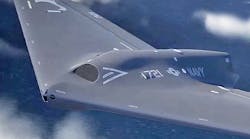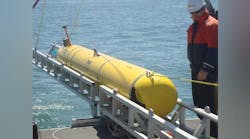By John McHale
SAN DIEGO - Printed circuit board market forecasters are at-odds on many issues, but for the most part they all agree on one point: the market for CompactPCI boards is heading sharply upward. Less clear are market trends for the VME market in general and the military VME market in particular.
The overall VME merchant board market will drop from $1.1 billion in 1999 to $780 million in 2003, while CompactPCI will jump from about $146 million in 1999 to $690 million in 2003, according to a study by Venture Development Corp. (VDC) in Natick, Mass.
VDC Vice President Maurice Klapfish unveiled this prediction during the February Bus & Boards conference in San Diego. Other industry pundits displayed varying numbers at the conference, but all concluded definite growth by 2003 for CompactPCI. They disagreed on the future of VME.
The military market for VME will remain steady, but eventually will switch to CompactPCI, predicts Mike Sadlowski, project director at VDC. The first ones to switch to CompactPCI will be communications companies, then industrial automation, and finally military, he says.
VDC's numbers have PCI going from $677 million in 1999 to $1.4 billion in 2003, and ISA dropping from $310 million in 1999 to $194 million in 2003.
The majority of use for CompactPCI is among telecommunications companies, Klapfish says. VDC's research found that it has stronger Microsoft support than VME, he adds.
CompactPCI has advantages over VME with its hot swapping and high availability, Sadlowski says. VDC's research also found the average CompactPCI product costs less than a comparable VME device, he adds.
Switching to CompactPCI is easy for VME vendors because the two technologies share the same Eurocard form factor, Sadlowski says.
Ray Alderman, executive director of the VME International Trade Association in Scottsdale, Ariz., disagrees with the VDC study. He claims VDC's numbers are skewed toward CompactPCI vendors. Not enough VME people who use VME were included, he charges.
Designers use CompactPCI primarily for Advanced Intelligent Instrument (AIM) and Digital Subsystem Line (DSL) applications such as cellular phones and caller identification, Alderman says. VME is used in Signal System 7 (SS7), the hook that holds all the switches together in a system, he continues.
SS7 needs the kind of real-time reliability available only from VME, not CompactPCI, Alderman claims.
Alderman, well known as one of the board industry's strongest champions of VME, claims a more accurate market snapshot comes from numbers by Jerry Krasner, research editor and director of the Electronics Market Forecasting group of CMP's Media Electronics Group in Waltham, Mass., formerly Miller Freeman.
By 2005, Krasner says the commercial-off-the-shelf (COTS) military market for VME alone will do about $780 million while the overall merchant board market will do about $1.9 billion for VME. CompactPCI, meanwhile, will do about $264 million and PCI will grow to about $900 million.
CompactPCI is not competing against VME, but rather "battling PCI and ISA," Krasner says.
Joe Pavlat, president of the PCI Industrial Computer Manufacturers Group (PICMG) in Wakefield, Mass., and director of strategic planning at Motorola Computer Group in Ariz., says he agrees with Alderman and Krasner that VDC's numbers are too low for VME. Motorola's VME business continues to grow steadily every year, he points out.
CompactPCI is useful for packet switching in telecommunications applications and is widely used in DSL systems, Krasner adds. "VME can handle intense data transfer in a 21 slots, which can't be handled by CompactPCI," he claims.
The bulk of VME boards shipping today comes from design-ins of five years ago before CompactPCI was an issue, Pavlat says. "As for when the military will switch to CompactPCI is anybody's guess," he adds.
However, Pavlat claims VDC and Krasner's numbers were too low for CompactPCI. The approximately $1 billion to $1.5 billion in CompactPCI business in five years forecasted at the conference by Warren Andrews, an analyst at Market & Technology Quarterly, is more on the mark, Pavlat says.
Andrews also reported continued growth for VME, yet he predicted that VME's rate of growth will decline. "The military guys and the telecom guys have a lot in common," Pavlat says. They have the same requirements for high reliability and the same problems with acquiring high-reliability products from the open market, he explains.


